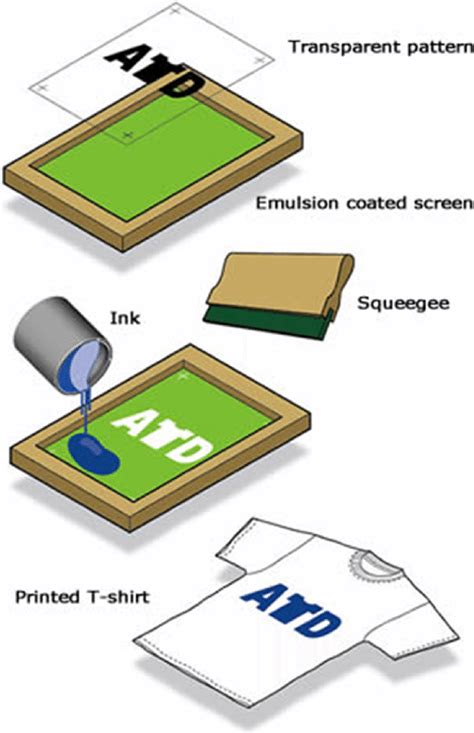Screen Printing Removal: A Step-by-Step Guide
Screen printing is a fantastic way to add durable, vibrant designs to a variety of surfaces. However, sometimes you need to remove that printed design. Whether it's a mistake, a change of heart, or preparing an item for repurposing, knowing how to effectively remove screen printing is a valuable skill. This comprehensive guide will walk you through various methods, helping you achieve the best results depending on the surface and the type of ink used.
What You'll Need:
Before you begin, gather the necessary tools and materials. The specific items will depend on the method you choose, but generally, you'll need some combination of the following:
- Safety Gear: Gloves (nitrile are recommended), eye protection (safety glasses), and a respirator (especially for chemical methods).
- Cleaning Agents: Depending on the ink and substrate, this could include isopropyl alcohol (IPA), acetone, denatured alcohol, paint thinner, or specialized screen printing ink removers.
- Abrasives: Steel wool, fine-grit sandpaper, or a scouring pad might be necessary for stubborn ink.
- Cleaning Tools: Cotton rags, brushes (stiff and soft), and possibly a pressure washer (for outdoor use).
- Protective Covering: Cover your work area to prevent damage or staining.
Choosing the Right Method:
The best method for screen printing removal depends on several factors:
- Type of Ink: Plastisol inks are the most common and often require more aggressive removal methods. Water-based inks are generally easier to remove.
- Substrate Material: Removing ink from delicate fabrics requires a gentler approach than removing ink from durable materials like metal or glass.
- Ink Age: Fresh ink is typically easier to remove than older, cured ink.
Step-by-Step Removal Methods:
1. Isopropyl Alcohol (IPA) Method (For Water-Based Inks and Some Plastisol Inks):
This method is best suited for water-based inks and sometimes newer, less cured plastisol inks. It's a gentler approach that minimizes damage to the substrate.
- Preparation: Put on your safety gear. Protect your work surface.
- Application: Soak a cotton rag with isopropyl alcohol (90% or higher concentration) and gently rub the printed area.
- Scrubbing: For stubborn ink, use a soft-bristled brush to gently scrub the area.
- Repeat: Repeat the process as needed, allowing the alcohol to penetrate the ink.
- Cleaning: Rinse the area thoroughly with water and allow it to dry completely.
2. Acetone or Paint Thinner Method (For Stubborn Plastisol Inks):
Acetone and paint thinner are stronger solvents and should be used with caution. They're effective for removing stubborn plastisol inks but can damage certain materials. Always test in an inconspicuous area first.
- Preparation: Wear your safety gear and work in a well-ventilated area. Protect your work surface.
- Application: Apply the acetone or paint thinner sparingly to a cotton rag and gently rub the printed area.
- Scrubbing: Use a soft-bristled brush or steel wool (use cautiously!) to gently scrub.
- Repeat: Repeat as needed.
- Cleaning: Rinse thoroughly with water (if applicable) and allow to dry completely.
3. Abrasive Method (For Stubborn Inks on Durable Surfaces):
This method is suitable for very stubborn inks on durable surfaces like metal or glass. However, it can damage delicate materials.
- Preparation: Protect your work surface and wear safety glasses.
- Abrasion: Use fine-grit sandpaper or steel wool to gently scrub the printed area. Start with a finer grit and increase if needed.
- Cleaning: Clean the area with a damp cloth to remove debris.
4. Commercial Screen Printing Ink Removers:
Specialized commercial removers are available and often provide the best results for stubborn inks. Follow the manufacturer's instructions carefully.
Troubleshooting Common Problems:
- Ink Residue Remains: Try a stronger solvent (with caution!), increase the scrubbing time, or use an abrasive method.
- Substrate Damage: Be gentle! Always test your chosen method on an inconspicuous area first.
- Safety Concerns: Always prioritize safety. Work in a well-ventilated area, use appropriate safety gear, and follow manufacturer instructions for all cleaning agents.
Frequently Asked Questions (FAQs):
Can I remove screen printing from fabric?
Yes, but you need a gentler approach. Isopropyl alcohol is a good starting point, but test it on a hidden area first. For delicate fabrics, consider a commercial remover specifically designed for textiles.
How do I remove screen printing from plastic?
The method depends on the type of plastic and ink. Acetone or a commercial remover might work, but always test it on an inconspicuous area to avoid damaging the plastic.
What is the best way to remove old screen printing?
Old, cured ink is the most challenging to remove. You may need to combine methods, starting with a solvent and then using abrasion if necessary. A commercial remover may be your best bet.
Is it possible to remove screen printing completely?
While complete removal is often achievable, it depends on several factors including the type of ink, substrate, and age of the print. Some residue might remain, especially with very old or stubborn inks.
By carefully following these steps and choosing the appropriate method, you can successfully remove screen printing from various surfaces while minimizing damage and ensuring your safety. Remember to always prioritize safety and test your chosen method in an inconspicuous area before applying it to the entire surface.

